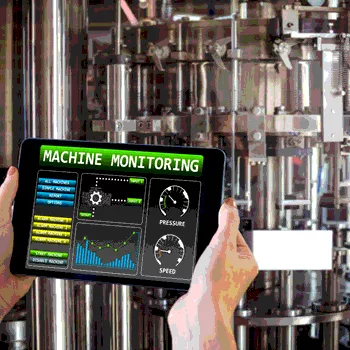The Importance of Establishing Food Safety Indicators to Improve National/International Food Safety Systems

 “What gets measured gets done” is an important saying that food safety bodies/authorities must follow to strengthening national and international food safety system(s). To do so, effective food safety performance indicators must be selected and/or developed (Figure 1). These indictors must be able to: monitor the performance/progress of a food safety project/activity (such as monitor the performance of the implementation of an intervention) and monitor the performance/progress of the entire food safety system (at national, community, and/or household levels). These indictors must be able to detect food safety issues where solutions must be developed to improve the efficacy of the project/system to achieve the expected goal(s).
“What gets measured gets done” is an important saying that food safety bodies/authorities must follow to strengthening national and international food safety system(s). To do so, effective food safety performance indicators must be selected and/or developed (Figure 1). These indictors must be able to: monitor the performance/progress of a food safety project/activity (such as monitor the performance of the implementation of an intervention) and monitor the performance/progress of the entire food safety system (at national, community, and/or household levels). These indictors must be able to detect food safety issues where solutions must be developed to improve the efficacy of the project/system to achieve the expected goal(s).
It is worth mentioning that there is no agreement on specific food safety performance indicators among international food safety bodies; however, specific sets of indicators have been proposed. For example, in a publication entitled “Regional consultation on food safety indicators for Asia and the Pacific” in 2017, the Food and Agriculture Organization of the United Nations (FAO)[1] categorized 139 existing food safety indicators [developed/proposed by different organizations including FAO, the Global Food Safety Initiative, the Organization of Economic Cooperation and Development, the Economist Intelligence Unit, the International Food Policy Research Institute, etc.] under five different categories as follows:
1. Twenty-five indicators on a food safety system level, including:
• Government commitment to protect consumers’ health and ensure fair practices in food trade
• The presence of an agency to ensure the safety of food
• Financial provisions secured for supporting the food safety authority
• The existence of a Codex committee
• Leaders set clear objectives concerning hygiene and food safety
2. Fifty-nine indicators on a food safety capacity-level, including;
• National food safety emergency response capacity
• Risk-based inspections and audits
• The number of food inspectors trained to perform official food controls
• The ability to meet, and demonstrate compliance with, international food safety and quality requirements and obligations (i.e., Codex standards, etc.)
• The frequency of attending international working groups on Codex issues by government representatives
3. Fifteen indicators on a sector-specific level, including;
• The percentage of the population with access to potable water
• The presence of a formal grocery sector
• The percentage of producers that are implementing food safety managing programs
• The percentage of producers that have implemented a traceability system
• The number of foodborne outbreaks/illness
4. Thirty-four indicators on a specific food safety topic, including;
• The use of agricultural chemicals (pesticides) or pesticide residues
• Microbial contamination
• Mycotoxin contamination
• Allergenic risks (labelling food and indicating allergens)
• The overuse of food additives
5. Six indicators on surrounding factors, including;
• Changes in public trust in food safety over a specific time
• The global hunger index
• Agricultural productivity
The author urges international food safety organizations to select certain effective, specific, relevant, realistic, measurable, reliable, appropriate, independence, achievable, food safety performance indicators where donors (those who invest in food safety in developing countries) and governments of developing countries can use to monitor, evaluate, and improve the efficacy of their food safety projects/systems.
Barakat Mahmoud, Ph.D., is an international food safety expert with nearly 30 years of experience in food safety. He has provided technical assistance in food safety in several developing countries in Africa, Asia, Central America, Middle East, and the Caribbean.
Reference
1. www.fao.org/3/i9459en/I9459EN.pdf.
Looking for quick answers on food safety topics?
Try Ask FSM, our new smart AI search tool.
Ask FSM →








